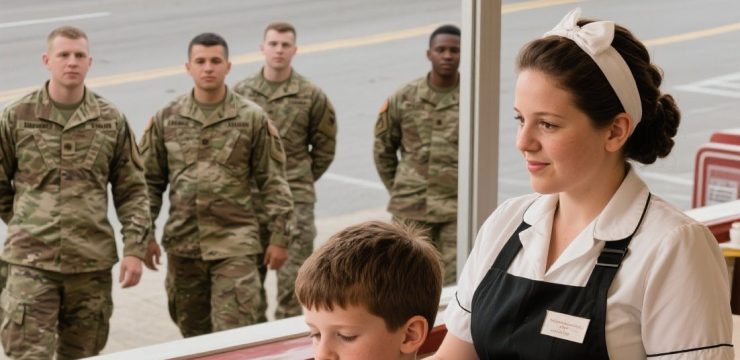When people board a plane, they trust that their journey will be smooth, routine, and uneventful. For passengers on Alaska Airlines Flight 2221, that expectation shattered only minutes after takeoff. What began as an ordinary trip from Oakland, California, to Portland, Oregon, quickly turned into a dramatic test of human composure and teamwork at 30,000 feet in the air.
The morning began like any other. Passengers filed into the cabin, finding their seats, stowing luggage, and settling in for the short flight north. The hum of conversation mixed with the familiar instructions from flight attendants, the click of seatbelts, and the anticipation of landing in Oregon’s crisp autumn weather. No one could have predicted that within an hour, they would be part of a story that would capture national attention.

Shortly after the aircraft reached cruising altitude, the calm atmosphere shifted abruptly. A male passenger seated near the middle of the plane began exhibiting erratic behavior. At first, his actions seemed mildly concerning—muttering to himself, shifting in his seat, and glancing nervously at others. But within moments, his agitation escalated into a full-blown psychotic episode. Witnesses later described how his demeanor transformed suddenly, his voice rising as he lashed out at those nearby.
Panic rippled through the cabin. The man began shouting incoherently, thrashing, and attempting to strike other passengers. In the confined space of the aircraft, fear spread fast. Some passengers cried out, others froze, unsure of what was happening or how to react. The tension was palpable—the kind of fear that only arises when there’s no escape, no safe place to run, and the ground is miles below.
The flight attendants, trained for emergencies but rarely faced with such a volatile situation, sprang into action. Remaining remarkably composed, they worked quickly to assess the threat while ensuring the safety of everyone on board. A few passengers seated nearby immediately offered assistance. Together, they managed to subdue the man using improvised restraints—seatbelt extenders, the only available tool strong enough to secure him safely without causing harm.
It was a tense, coordinated effort. The crew maintained communication with the cockpit, where the pilots considered whether an emergency landing might be necessary. However, thanks to the passengers’ and crew’s quick, decisive response, the situation was brought under control within minutes. The man was restrained in his seat, monitored closely, and kept calm until the plane touched down in Portland.
As the aircraft taxied to the gate, relief washed over everyone. Law enforcement and emergency medical personnel were already waiting on the tarmac. The restrained passenger was taken into custody without resistance and transported to a local medical facility for evaluation. Authorities later confirmed that he was experiencing a severe mental health crisis at the time of the incident.
Despite the chaos that unfolded mid-air, no passengers or crew members were physically injured. Alaska Airlines commended the professionalism of its staff and the bravery of the passengers who stepped in to help. For everyone aboard Flight 2221, it was an experience they would never forget—but also a lesson in how calm coordination can avert tragedy even under extreme pressure.
This incident serves as a powerful reminder of how critical flight crew training is—not only for mechanical or technical emergencies but also for unpredictable human behavior. Flight attendants undergo extensive safety preparation, including de-escalation and restraint techniques. Their ability to stay composed, think clearly, and communicate effectively can make all the difference in moments of crisis.
The episode also underscores a growing challenge in modern air travel: addressing mental health emergencies that occur mid-flight. Unlike a heart attack or a sudden illness, mental health crises can manifest unpredictably and may pose safety risks to others. Airlines are increasingly recognizing the need for greater awareness, training, and resources to manage such situations with compassion and care.
Mental health professionals emphasize that these episodes are rarely intentional. Individuals experiencing psychosis or severe panic are often terrified themselves. Handling these situations requires empathy as much as authority. In this case, the crew managed to protect everyone onboard while ensuring that the passenger in distress was treated humanely—a balance that reflects professionalism and humanity working together under stress.
For the passengers who witnessed it all, the experience left lasting impressions. Many later praised the airline’s staff for their composure and teamwork. Others expressed newfound appreciation for the unseen skills and responsibilities that flight attendants carry beyond offering drinks and snacks. As one traveler shared in a post-flight interview, “You never really think about how much trust you put in the people running the plane—until something like this happens. They kept everyone safe. That means everything.”
In the days following the event, discussions about airline safety and mental health awareness resurfaced across social media and aviation circles. Experts pointed out that while security threats have long been the focus of airline preparedness, mental health incidents represent a newer, equally important frontier in passenger safety.
The story of Alaska Airlines Flight 2221, then, is not one of disaster but of discipline, cooperation, and human decency prevailing under extreme conditions. It’s a testament to the importance of readiness—of both procedures and people. Emergencies don’t always announce themselves with alarms or flashing lights. Sometimes, they come quietly, disguised as an ordinary day that suddenly turns unpredictable.
Looking back, the outcome could have been far worse. The professionalism of the crew, the courage of assisting passengers, and the collective sense of calm turned what might have been a tragedy into a moment of triumph. The flight landed safely, and everyone walked away physically unharmed—a success by every standard in aviation safety.
As we reflect on the unpredictable nature of air travel, Flight 2221 stands as a powerful example of resilience and humanity in motion. It reminds us that while technology and safety systems are crucial, it is people—ordinary individuals acting with courage and compassion—who truly safeguard the skies.
The incident reinforces a simple but profound truth: preparedness and empathy can coexist, and when they do, they can turn fear into control, chaos into calm, and crisis into a story of strength. For the passengers of Alaska Airlines Flight 2221, that truth soared as high as the plane itself, proving that even at 30,000 feet, humanity can rise to the occasion.





